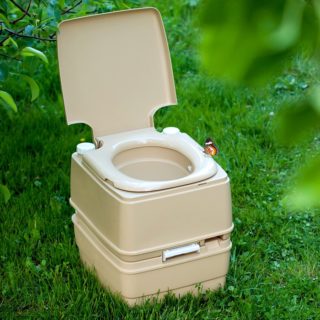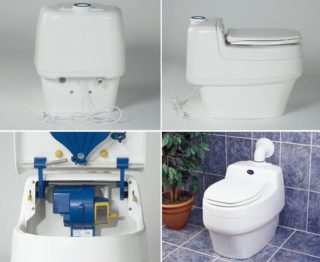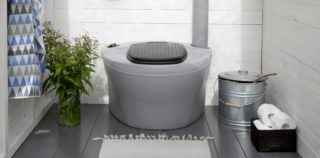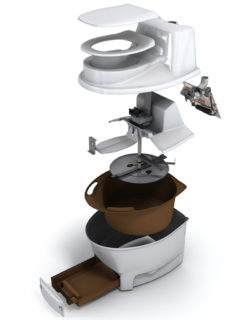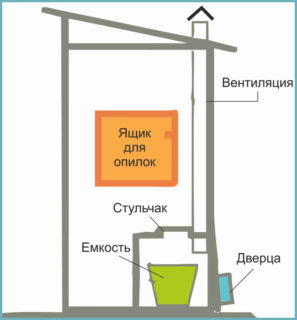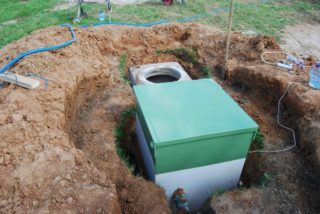In the modern world, the lack of a centralized sewage system in the country has ceased to be a problem. Why carry buckets of waste or use expensive services of sewage equipment, if you can install a toilet without a cesspool and get rid of the unpleasant smell and pumping waste products forever.
Dry closets
The model is compact, easy to assemble, lightweight and easy to operate. Consists of two chambers: the upper one is used as a toilet, and the lower one collects and recycles waste. By adding safe ecological additives to the lower chamber, the contents can be poured into the ground without fear for the quality and fertility of the soil. Flushing takes place at the expense of a pump (piston, electric from batteries or pump). Thanks to septic tanks, there is no smell, emptying goes through the drain pipe. Most models are equipped with a storage tank full indicator. You can buy a floor panel to secure the structure to the floor.
Prices from 4500 rubles and more.
Disadvantages:
- most often used are toxic products of non-natural origin, which are harmful to the environment;
- the septic tank is poured after each emptying of the tank;
- frequent purchase of chemicals;
- at subzero temperatures, there is a high probability of moisture freezing in the tanks;
- in general, the height of the toilet is low.
Electric dry closet
Disadvantages:
- high price;
- installation of a drainage system;
- availability of electricity.
Electric dry closet for burning waste products. It is used when it is impossible to dispose of products. Waste destruction is accompanied by a high combustion temperature (550 degrees). The system is protected against overheating. Ash is required to be cleaned every five days. Waste-free option.
Disadvantages:
- high price from 100,000 rubles;
- disposable waste collection bags;
- installation of a ventilation pipe;
- electricity.
There are models of dry closets with deep freeze (up to -18 degrees) of waste in the accumulation tank, which are placed in biodegradable bags. When emptying, you do not need to move the storage tank, it is enough to get out the contents. No water or sewerage required.
Peat toilet
Disadvantages:
- it is worthwhile to carefully approach the installation site, since a ventilation pipe and a drain system are required.
Electric peat toilet
Installed anywhere, no odor, designed for a family of up to five people. The device contains a biodegradable bag that can be composted with other waste.
Disadvantages:
- high price of the device;
- electricity required.
Powder closet
The advantages include ease of installation and cost savings.
Disadvantages:
- frequent maintenance;
- heavy container with waste;
- not always aesthetic appearance;
- installation of ventilation;
- long waste processing;
- compost heap care.
Septic tank
To select the degree of wastewater treatment, the peculiarity of the soil is taken into account. For example, in places where groundwater is located close to the surface or low-permeability soil, it is not recommended to use models with soil post-treatment. The best options are sandy soil.
You can choose a septic tank without taking into account the soil based on the deep biological treatment method. The more expensive and more complex the device of the septic tank system, the less often mechanical cleaning is required.
Disadvantages:
- financial costs for the installation and maintenance of equipment;
- water and electricity connection required;
- pumping out;
- installation and configuration by specialists.

